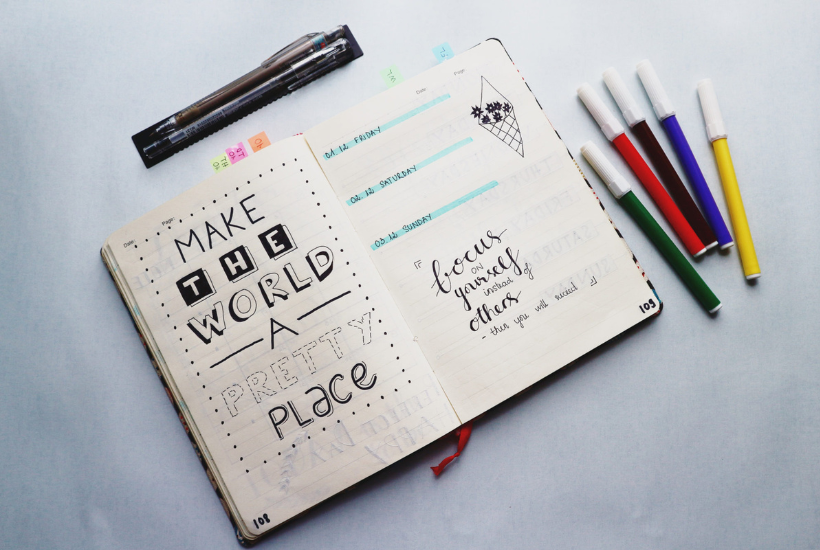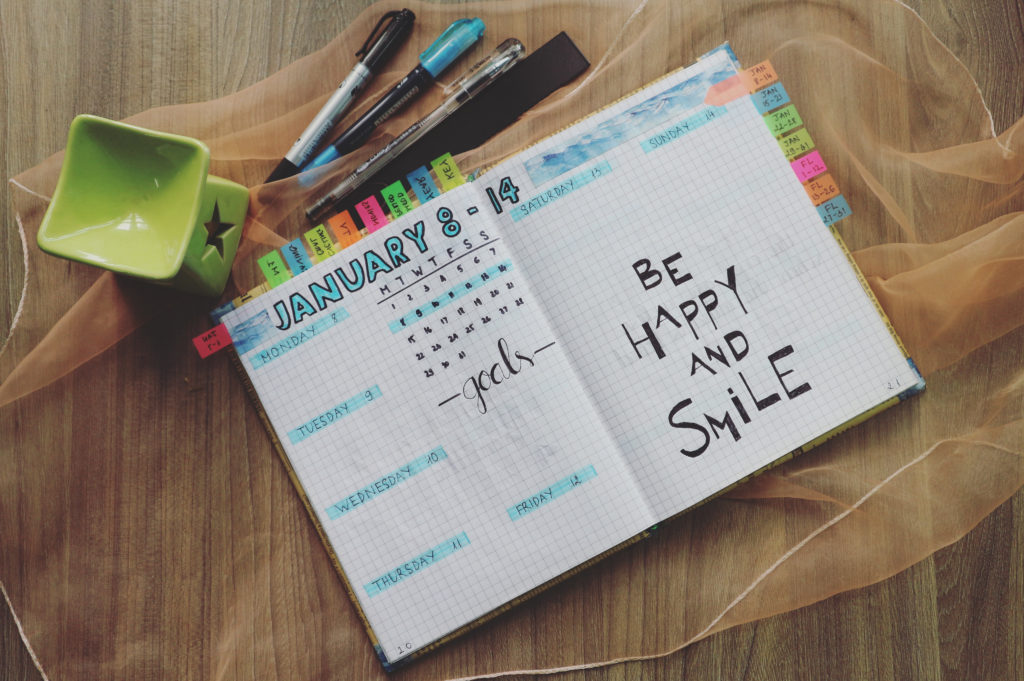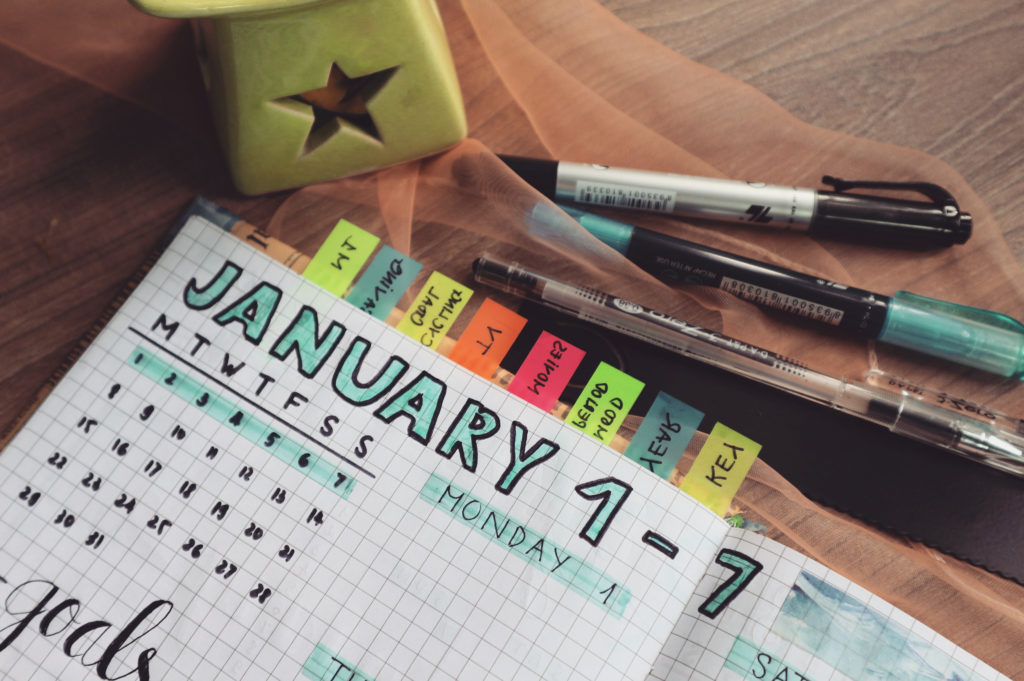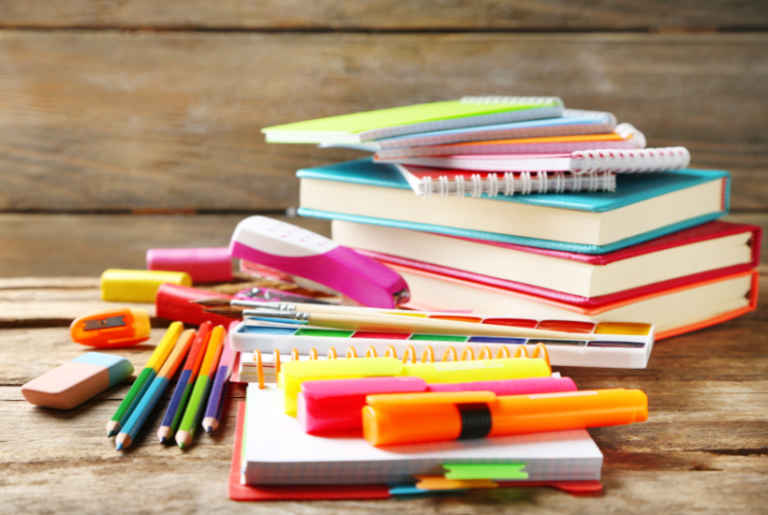Ultimate Guide on Bullet Journaling for Beginners

Are you interested in starting your own bullet journal but don’t know how or where to begin? Here is a beginners guide to help you get started. Bullet journals have become one of the most popular types of planners in 2020. It’s my personal favorite because you get to be creative and customize it however you want!
What is a Bullet Journal?
You may be wondering what the heck is a bullet journal. Maybe you saw a post of a bullet journal online or your friend showed you theirs and it sparked your curiosity. A bullet journal is a planner method created by Ryder Carol. It’s used to track the past, order the present, and design the future. You can find in depth information in Ryder Carol’s book, The Bullet Journal Method.
My guide will help you get started quickly and easily.
Bullet Journal Terms.
There are a few words you’ll hear often in the bullet journal world. Here are some of the basic terms and what they mean:
Trackers
A tracker is a type of spread people use to track information over a time period. For example some people like to create mood or habit trackers and track every day for a specified period. Trackers are used for a week, month, or a year depending on what specific outcome you’re trying to achieve.
Spreads
A spread is two pages side by side. Two pages side by side for a week is called a “weekly spread” or “weeklies”, for the month is called a “monthly spread” or “monthlies” and for days is called a “daily spread” or “dailies”.
Supplies to Get Started
To start your bullet journal you only need a journal and a pen. When starting out, don’t think it has to be a picture perfect or fancy journal. You’ll find your style as go. And it’s really fun to get creative with your bullet journal. After you get the basics down, check out the bullet journal supplies I recommend.
Where to start.
People often have a hard time starting a bullet journal because they think it has to be in a certain way and tend to over complicate it. Starting your bullet is easy, all you need are a few supplies, and to just well….start! You can always make changes as you go. Start by thinking about what outcome you want to achieve with your bullet journal. Do you want to use it for habit tracking? Do you want to use it as your planner, calendar or to-do list? Maybe you want to use it for all of these things. You don’t have to get it perfect, you just have to get it going and tweak along the way until you find a process you’re happy with.
1. Setup Your Bullet Journal
When setting up your bullet journal, remember you only need to include what’s going to work for you. You can customize in the way that works best for you. I recommend picking the basics things such as the index, monthlies, and dailies and then add more from there like tracker.
Add Your Index
The first thing to create is your index. This is where you will list where to find the different sections in your journal. You’ll be numbering the pages of your journal as you add them and then including those numbers in your index so you know where to find things. Just label the first few pages as index and start numbering the rest of the pages starting at one. As you add in new things in your journal be sure to add it to your index.
Create a Monthly Spread

The monthly spread is where you keep your month. There are many ways you can go about it, you can keep it simple and use a list format. Or you may like a more traditional calendar set up, it’s totally up to personal preference. Here you can plan out your month .
Create a Weekly Spread

The weekly spread can be used to plan out your next seven days. You can add whatever you want to you weeklies ranging from appointments, deadlines, or goals.
Create a Daily Spread
You use daily spreads to plan your to do for the day. You’ll pull priority items from your weekly spread. This is also the place to write down any notes you have for the day.
2. Add Extra Sections
Now you can add in any extra sections that you think will be helpful to have in your bullet journal.
Future Log
The future log is aplanner where you can write down any future events, appointments, and dates for upcoming events. This is used for any months you have not already set up. This is a great solution to use so you end up having to set up monthly spreads months in advance just because you need to plan something for the future.
Collections
Collections are anything else you want to add to your journal that doesn’t fall in the categories mentioned above. This could be trackers, logs, lists etc. Basically anything you could possibly think of. You can use colored tabs to bookmark your logs.

Here are some of my favorite log ideas:
- Food log. A food log is where you basically write down any food you eat and symptoms that go with it. I use a food log on a daily basis to track the foods I eat, amount of calories I consume and symptoms. I have to track my food and calorie intake due to my Gastroparesis.
- Gratitude log. A gratitude log is the perfect place to write anything you are grateful for down.
- Goals log. Here you can write down all of the goals you’re working towards and steps needed to get you there.
How you use your bullet journal is all personal preference. Once you get started, you’ll figure out what works best for you. Once you get in the groove of doing your journal it will be easy to find out what you prefer to use, how to plan it out and how to be creative.
I hope you’ve learned a little more about bullet journaling and are inspired to start your own! I’d love to hear how you set up your bullet journal.


